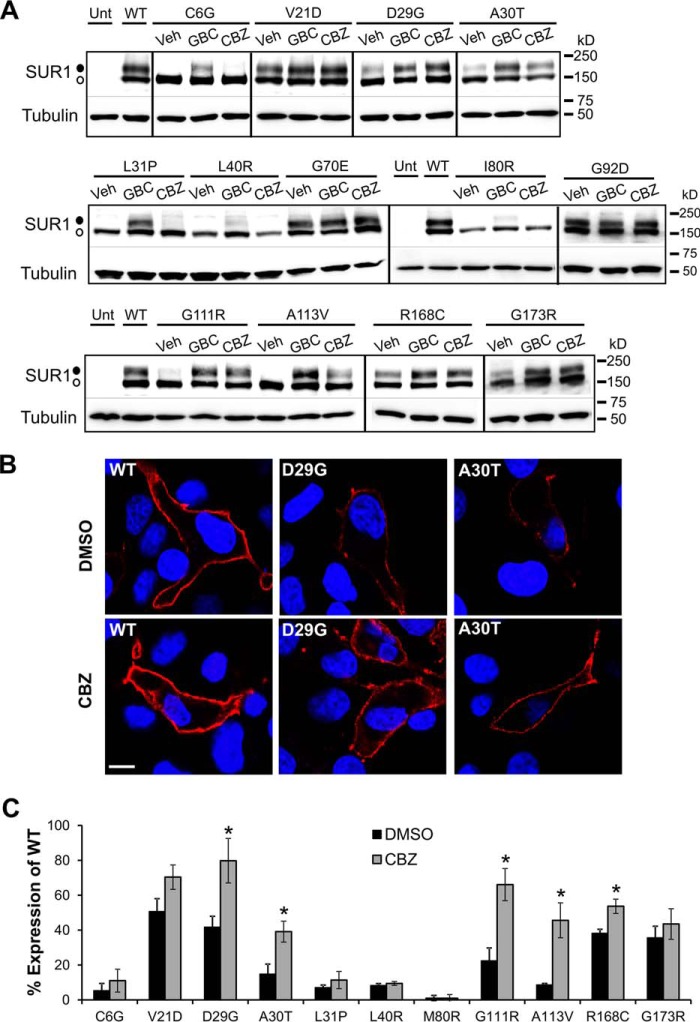FIGURE 4.
Carbamazepine restores surface expression of trafficking-impaired SUR1 mutants. A, Western blots of f-SUR1 from COSm6 cells co-transfected with rat WT Kir6.2 and mutant hamster f-SUR1 cDNA and treated with 0.1% DMSO (Veh), 5 μm GBC, or 10 μm CBZ for 16 h. Note that in hamster SUR1, amino acid position 80 is an isoleucine rather than a methionine found in human SUR1. Untransfected cells (Unt) and cells expressing WT channels were included for comparison. The thin lines separate different parts of the same blot, and thick vertical lines separate different blots. The empty circle points to the core-glycosylated immature SUR1, and the solid circle points to the complex-glycosylated mature SUR1. B, surface expression of the D29G or A30T SUR1 mutants in cells transfected with WT rat Kir6.2 and hamster D29G or A30T f-SUR1 was monitored by immunostaining of the extracellular FLAG epitope tag of f-SUR1 (red) in non-permeabilized cells. The nuclei were stained with DAPI (blue). Scale bar, 5 μm. WT channels were included for comparison. The staining was repeated twice with qualitatively similar results. C, quantification of surface expression rescue of trafficking-impaired KATP channels by chemiluminescence assays. Each bar represents the mean ± S.E. (error bars) of 3–4 experiments. *, p < 0.05 comparing DMSO (0.1%)-treated versus CBZ-treated (10 μm) cells by Student's t test. Note that although the average surface expression level for all mutants was higher in CBZ-treated cells compared with DMSO-treated cells, the increase did not reach statistical significance for some of the mutants.

